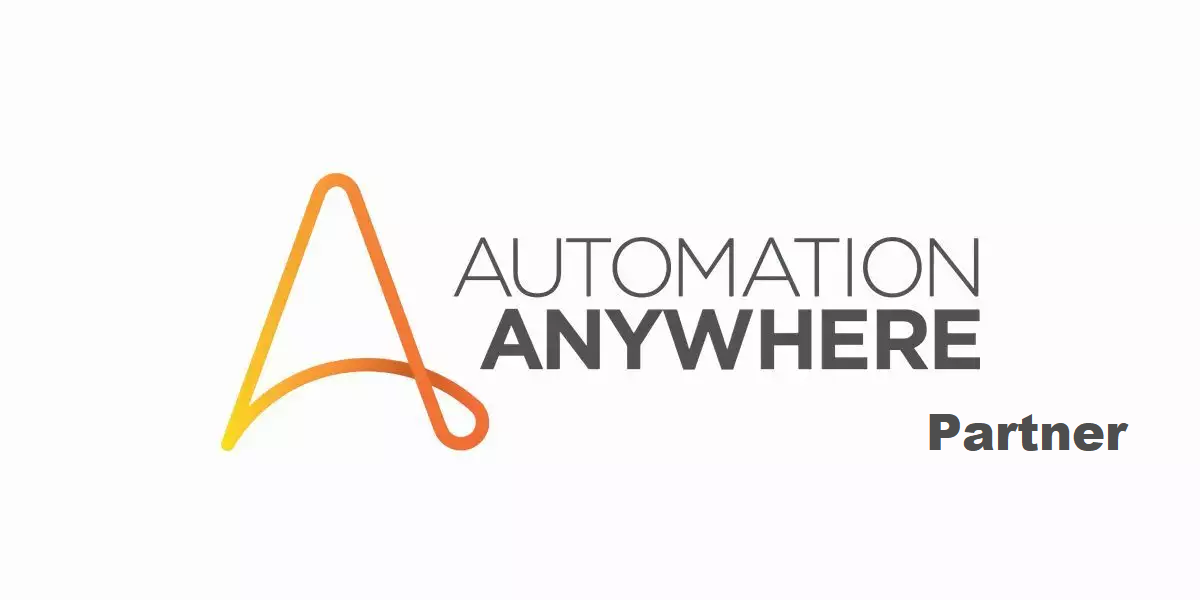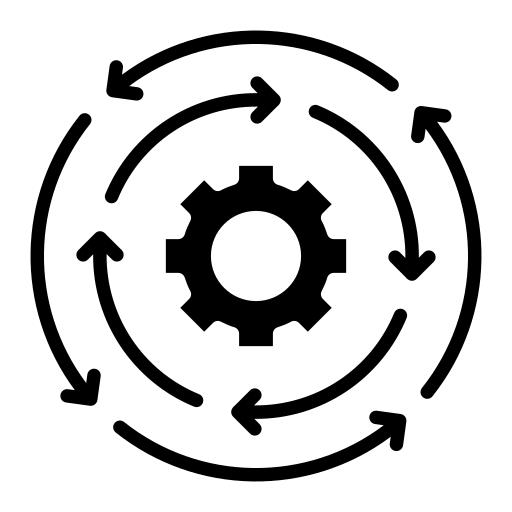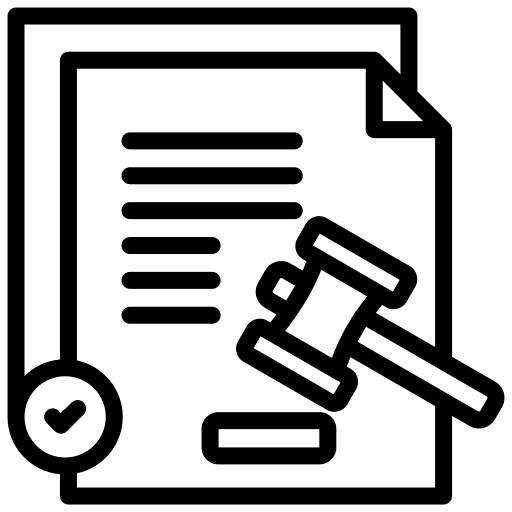


RPA Components
Discover the future of automation with our RPA and AI & ML solutions. Our services harness the power of Robotic Process Automation (RPA) to streamline repetitive tasks, boosting productivity and accuracy. By integrating Artificial Intelligence (AI) and Machine Learning (ML), we provide intelligent systems that learn and adapt, delivering deep insights and predictive analytics. Whether optimizing workflows or enhancing customer experiences, our RPA and AI & ML solutions transform your business operations, driving innovation and competitive advantage. Embrace the next generation of technology with us and revolutionize the way you work.
How Our RPA Solutions Drive Business Transformation
RPA for Efficiency: Automate Your Operations Seamlessly
Our RPA is designed to automate routine, rule-based tasks that are typically manual and time-consuming. By implementing RPA, your business can achieve seamless automation across various operations, eliminating the need for human intervention in repetitive tasks like data entry, document processing, or report generation. This allows organizations to run smoother, more efficient operations without interruptions or delays. With RPA handling these processes, employees can focus on higher-value work, such as problem-solving or strategy development, ultimately increasing overall operational efficiency.
Streamlined Automation: Reduce Costs and Boost Productivity
One of the primary benefits of our RPA is its ability to reduce operational costs. By automating repetitive tasks, your business no longer needs to rely on a large workforce for menial or mundane activities, which reduces labor costs. Our bots are also faster and more accurate than humans, which helps minimize errors and the need for rework. As a result, productivity is boosted, as tasks are completed in a fraction of the time, with no downtime or fatigue. Additionally, our bots can work 24/7, further maximizing output without the constraints of business hours. This combination of cost reduction and productivity improvement creates a more agile and profitable organization.
Efficient RPA Implementation: Transform Your Business with Intelligent Automation
Efficient implementation of RPA means integrating it smoothly into your existing systems and processes without disrupting daily operations. At Neotechie, we provide intelligent automation solutions that go beyond just automating tasks. We assess your business workflows to identify the most suitable areas for automation, ensuring maximum return on investment. Our RPA solutions are designed to be scalable and adaptable, so as your business grows or evolves, your automation capabilities can grow with it. By carefully planning and executing RPA adoption, we help businesses transform operations, enhancing not only productivity and cost-efficiency but also accuracy and compliance. With RPA handling the repetitive work, your teams can focus on driving innovation, customer experience, and long-term strategic goals.
Advantages & Benefits RPA provides for Businesses?
RPA optimizes workflows, enhancing organizational profitability, flexibility, and responsiveness. It also boosts employee satisfaction, engagement, and productivity by eliminating repetitive tasks from their daily routines. RPA is non-disruptive and can be quickly deployed to speed up digital transformation initiatives.

Accelerated Transformation: The Role of RPA in Digital Transformation
RPA is a key driver of digital transformation, working in tandem with AI technologies to optimize business operations. A recent survey of global executives found that 63% regard RPA as a key driver in their organizations' transformation efforts.
By automating repetitive, rule-based tasks, RPA boosts productivity by executing processes with remarkable speed, accuracy, and consistency. This allows organizations to reduce the time spent on manual, mundane work, freeing up valuable resources for more strategic activities.
As a result, employees are empowered to focus on higher-value tasks such as decision-making, problem-solving, and innovation—activities that require human creativity and expertise. Rather than spending hours on administrative tasks, employees can contribute more directly to the organization’s core objectives, enhancing overall business performance.

Major Cost Savings
Robotic Process Automation (RPA) is driving substantial cost savings across industries by delivering rapid and significant improvements to business performance. By automating repetitive, time-consuming tasks, RPA reduces the need for manual labor, cuts operational costs, and increases efficiency. Organizations no longer need to rely on large teams to handle routine processes like data entry, invoice processing, or report generation. Instead, RPA bots can perform these tasks quickly and accurately, freeing up employees to focus on higher-value work.
The cost-saving benefits of RPA extend beyond labor reduction. Automation improves process accuracy, reducing the risk of costly errors and the need for rework. It also speeds up workflows, enabling companies to handle larger volumes of work with the same or fewer resources. For industries with high transaction volumes, such as finance, retail, and healthcare, the financial impact of automating tasks can be especially significant.

Greater Resilience
One of the key benefits of Robotic Process Automation (RPA) is its ability to provide greater resilience for businesses, particularly when facing fluctuations in demand. RPA robots can quickly scale up to handle workload peaks, ensuring that operations remain smooth and uninterrupted, even during high-demand periods. Unlike human workers, RPA bots do not require breaks, can work 24/7, and can easily manage surges in tasks, whether they occur due to seasonal spikes, special promotions, or unforeseen events.
Moreover, RPA bots can quickly respond to changes in demand without requiring lengthy training or onboarding, making them more adaptable than human teams. They can also be deployed across various functions, such as customer service, data entry, or billing, ensuring that no part of the operation is overwhelmed.

Higher Accuracy
RPA is a powerful tool for improving accuracy in business processes. By automating repetitive tasks, RPA eliminates the risk of human error, which can often occur in data entry, calculations, or routine processing.
Unlike humans, RPA bots follow predefined rules with precision, ensuring that tasks are executed consistently and without variation. This leads to fewer mistakes, improved data quality, and a higher level of operational reliability. In industries like finance, healthcare, and manufacturing, where errors can be costly or even dangerous, the accuracy provided by RPA is especially valuable.
Additionally, the reduction in errors minimizes the need for rework and corrections, saving time and resources. In essence, RPA enhances the accuracy of workflows, driving operational efficiency and contributing to better overall performance across organizations.

Improved Compliance
Robotic Process Automation (RPA) plays a crucial role in helping organizations improve compliance across various industries. By automating tasks that require strict compliance, such as data entry, report generation, and regulatory filings, RPA reduces the risk of human errors that can lead to non-compliance.
Additionally, RPA enhances auditability and transparency. All actions performed by bots are logged and tracked, making it easier to monitor processes and quickly identify any discrepancies. This audit trail is invaluable for regulatory reporting and risk management.
RPA also speeds up compliance-related processes, such as gathering data for audits or submitting regulatory reports, reducing the time it takes to meet deadlines.

Greater Security and Scalability
RPA offers a fast, cost-effective solution for automating business processes at scale while ensuring full compliance with security and regulatory requirements. By automating routine tasks, RPA reduces the risk of human error, which is a common source of security vulnerabilities.
RPA can significantly strengthen IT security as well. By deploying bots to automate data protection processes—such as encryption, access control, and monitoring—organizations can better safeguard critical information. Automation also reduces the need for manual intervention, limiting opportunities for security breaches or mistakes.
RPA also provides exceptional scalability. Bots can adjust to fluctuating workloads in real time, ensuring operations continue smoothly even during periods of unexpected demand or rapid growth. Whether it’s processing large volumes of transactions or handling new tasks, RPA enables organizations to maintain efficiency and consistency without compromising performance.

Productivity and Digital Transformation
RPA is a key driver of digital transformation, working in tandem with AI technologies to optimize business operations. By automating repetitive, rule-based tasks, RPA boosts productivity by executing processes with remarkable speed, accuracy, and consistency. This allows organizations to reduce the time spent on manual, mundane work, freeing up valuable resources for more strategic activities.
As a result, employees are empowered to focus on higher-value tasks such as decision-making, problem-solving, and innovation—activities that require human creativity and expertise. Rather than spending hours on administrative tasks, employees can contribute more directly to the organization’s core objectives, enhancing overall business performance.
RPA in Financial Services: Enhancing Accuracy, Security, and Compliance
RPA significantly boosts accuracy, security, and compliance in financial services by automating key tasks. In customer onboarding, RPA speeds up data collection and verification, improving both efficiency and the customer experience. It also streamlines loan processing by automating data entry, document checks, and credit assessments, enabling quicker, more precise decisions—like when KeyBank used RPA to complete nine years of manual work in just two weeks.
RPA is crucial for ensuring compliance and regulatory reporting by automating data collection and reducing human error. This not only ensures adherence to regulations but also saves time and resources. In summary, RPA enhances speed, accuracy, cost-efficiency, and compliance in the financial services sector.
RPA in Healthcare: Enhancing Efficiency and Improving Patient Care
RPA improves operational efficiency in healthcare by automating administrative tasks, freeing up time for clinical staff to focus on patient care. For example, a UK hospital network saved 7,000 hours annually with RPA. Key applications include automating patient scheduling (reducing no-shows and improving flow), claims processing (speeding up verification and reimbursements), and patient data management (ensuring accurate electronic health records). RPA also aids in regulatory compliance by automating data collection and reporting. Overall, RPA enhances healthcare efficiency, patient care, and compliance, leading to better outcomes.
RPA in Manufacturing: Driving Efficiency, Cost Savings, and Productivity
RPA is transforming manufacturing by boosting efficiency, cutting costs, and speeding up time-to-market. It automates various processes, from inventory management to back-office tasks, delivering significant operational benefits. Key applications include automating inventory management (monitoring stock levels and reordering), order processing (handling invoices and shipments), and product inspections (ensuring quality and reducing inspection time). For instance, Stant used RPA to achieve 80% straight-through processing of invoices, reducing errors. RPA also enhances maintenance management by automating preventive maintenance scheduling and equipment performance tracking, minimizing downtime. Overall, RPA optimizes workflows, reduces costs, and improves operational efficiency across manufacturing processes.
RPA in Customer Service: Enhancing Efficiency and Customer Satisfaction
RPA enhances customer service by automating routine tasks and improving efficiency, leading to better customer experiences. It is commonly used for handling inquiries via chatbots or virtual assistants, reducing wait times and routing complex queries to the right agents. RPA also streamlines ticketing and issue resolution by automating complaint logging, categorization, and routing to support teams, improving response times. In new customer onboarding, RPA speeds up data entry and verification, ensuring error-free processes. Additionally, RPA automates customer feedback collection and analysis, enabling businesses to quickly act on insights and improve service. Overall, RPA improves response times, enhances service quality, and optimizes customer service workflows.
How RPA and AI Complement Each Other
While RPA and AI are distinct technologies, they are not mutually exclusive. In fact, they work incredibly well together, and their combination can help businesses unlock new levels of automation and efficiency. The key is understanding how each technology can contribute to the overall process and where their strengths intersect.
Enhanced Task Automation
When combined, AI enhances RPA’s ability to handle unstructured data or complex decision-making. For instance, RPA bots can handle the repetitive, rule-based tasks in a business process, while AI can take care of tasks that require judgment, such as recognizing patterns in data or interpreting natural language. For example, in document processing, RPA can extract data from structured documents, while AI (through NLP) can interpret and extract data from unstructured content, like emails or scanned images.
Improved Customer Experience
AI can manage customer-facing tasks like handling customer queries through chatbots (using NLP and sentiment analysis), while RPA can automate the backend processes triggered by customer interactions. For example, AI can understand customer inquiries and provide responses, while RPA can automatically update records, process requests, or escalate issues to human agents if necessary.
End-to-End Automation
While RPA can automate a series of predefined tasks, AI can take over when the process encounters an unpredictable or non-rule-based situation. For example, in a customer service workflow, AI could recognize a customer’s intent based on a conversation and, if the query requires further action, RPA can automatically execute the necessary backend process.
Process Mining and Optimization
RPA can automate routine tasks, but AI can help optimize processes. Through AI-powered process mining, businesses can analyze existing workflows, identify inefficiencies, and suggest areas for automation. This makes the process of identifying, prioritizing, and optimizing automation opportunities more efficient and dynamic.
Key Ways AI Supports RPA
Handling Unstructured Data
Traditional RPA struggles with unstructured data (like emails, PDFs, or documents) since it's not in a predefined format that can be easily processed. AI, particularly through Natural Language Processing (NLP), can analyze and understand this data, extracting relevant information such as dates, names, or financial details. This enables RPA bots to process and automate tasks that would otherwise require human interpretation of such data.
Enhanced Decision-Making
While traditional RPA follows simple, predefined rules for automation, AI brings the ability to make more sophisticated decisions. By using machine learning and data analysis, AI can assess situations, analyze patterns, and make context-aware decisions. This allows RPA bots to respond dynamically to changes in the environment—whether it's an exception in a process or a shift in the input data—without needing a complete reprogramming.
Continuous Improvement through Machine Learning
AI can help RPA systems become smarter over time by leveraging machine learning. Instead of sticking to static rules, the AI continuously learns from past actions, identifies patterns, and fine-tunes the bot’s behaviour to be more efficient and accurate. This self-improvement process makes RPA workflows more adaptable and effective as they evolve with changing business needs.
Automated Data Extraction and Validation
AI-powered tools like Optical Character Recognition (OCR) enable RPA to extract data from scanned documents, images, and forms. OCR can turn handwritten or printed text into machine-readable data, which RPA can then validate for accuracy. This reduces errors and speeds up the process of transferring data from physical sources into digital systems, ensuring the information is correct before it’s used in an automated task.
Predictive Analytics for Proactive Automation
AI’s ability to analyze large sets of historical data helps it predict future trends or outcomes. By utilizing predictive analytics, AI can forecast demand, detect potential bottlenecks, or identify opportunities for process improvements. This allows RPA systems to adjust workflows in advance, optimizing operations and preventing issues before they arise.
